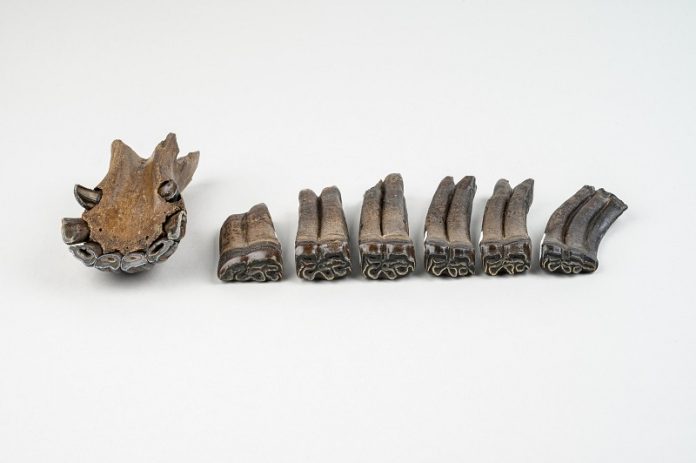
Around 500,000 years ago, a group of horses, sloths, and armadillos met an unfortunate fate when they fell into a sinkhole in Florida’s Big Bend region.
Over time, the sinkhole filled with sediment, preserving their remains for centuries.
In 2022, fossil collectors Robert Sinibaldi and Joseph Branin made an incredible discovery while diving in the Steinhatchee River—an ancient fossil bed filled with well-preserved bones from Florida’s distant past.
Diving in the Steinhatchee River isn’t easy.
The water is filled with tannins, which darken visibility and make it feel like “diving in coffee,” according to Sinibaldi.
The two collectors had been fossil hunting for years, but on this particular day, they weren’t finding much—until Branin spotted horse teeth on the riverbed.
As they continued searching, they uncovered a hoof core, a tapir skull, and many other fossils—all in excellent condition.
“It wasn’t just the number of fossils; it was the quality,” Sinibaldi said. They realized they had found an important fossil site, but they didn’t yet know just how significant it was.
The fossil bed turned out to be from the middle Irvingtonian period of the Pleistocene ice age, an era that scientists have very little fossil evidence for. Before this discovery, there was only one other known site in Florida from this time period.
According to Rachel Narducci, a paleontologist at the Florida Museum of Natural History, the fossil record has plenty of specimens from the early and late Pleistocene, but the middle Irvingtonian is a missing link. Some species from the early Pleistocene went extinct, while new ones appeared in the late Pleistocene.
However, others evolved over time, changing in body size and shape. Until now, there was little fossil evidence to show how those changes happened.
One example is the now-extinct Holmesina, an ancient relative of today’s armadillos.
When Holmesina floridanus first appeared in Florida 2 million years ago, it weighed about 150 pounds. Over time, it grew larger, eventually becoming Holmesina septentrionalis, which weighed around 475 pounds.
The fossils found at Steinhatchee River reveal that the creatures’ bodies became larger before their bones adapted to support the extra weight. “This gives us new clues about how this species evolved,” Narducci explained.
So far, 552 fossils have been recovered from the site. Most belong to an early species of caballine horses, a group that includes today’s domestic horses.
This is significant because horses thrive in open landscapes, meaning the area was once much more open than the heavily wooded region it is today. If the land had been covered in dense forest, scientists would have expected to find more mastodons and deer instead.
The site also provided unusually well-preserved horse teeth, including upper and lower teeth from the same individuals, which is rare. Researchers can now study the wear and tear on these teeth to learn more about what these ancient horses ate.
Branin also found a tapir skull with a puzzling mix of features. While it’s unclear if it represents a new species or just an unusual individual, scientists are eager to study it further.
Unlike many major fossil discoveries, the Steinhatchee River site wasn’t found by professional paleontologists—it was discovered by hobbyists. Sinibaldi and Branin worked closely with experts like Narducci and Richard Hulbert from the Florida Museum of Natural History to document and analyze the fossils.
Branin noted that Florida is one of the few states that allows amateur collectors to search for fossils on state-owned land with a permit. This has led to many important discoveries.
Excavating fossils from an underwater sinkhole is no easy task, and further collection will take time.
However, researchers are excited about what else they might uncover. With each new fossil, they are piecing together the story of Florida’s prehistoric past, offering a rare glimpse into a long-lost world.



